#like not to be like the cinematography but the cinematography
Text

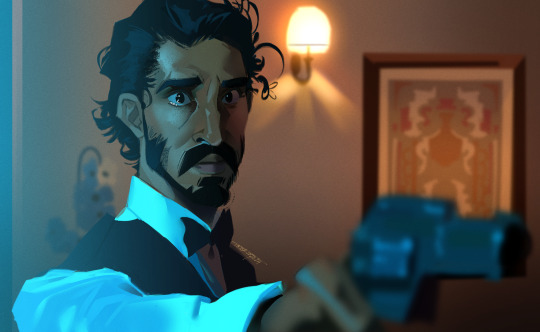
Some color studies I did with frames from the Monkey Man film. I really liked the artistic direction and a lot of the cinematography from this movie, that I just had to paint it.
(Alt-text in ID)
208 notes
·
View notes
Text
I think we as a community need to talk about how pleasing both Top Gun '86 and Maverick were to look at.
All the blues,
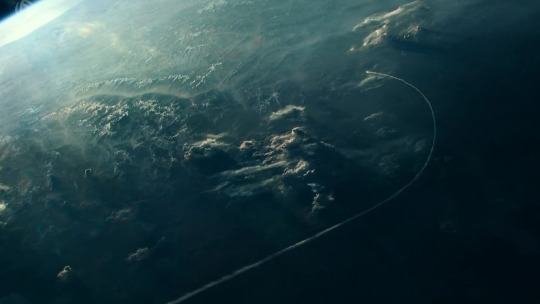


Golds,
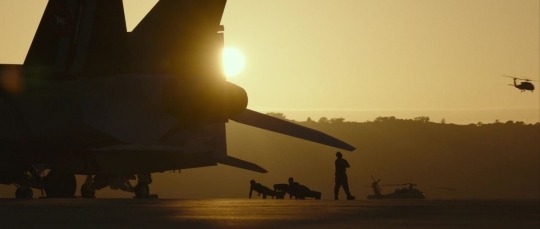


And mixes of reds, oranges, and various other colours.




It's all so unbelievable gorgeous to look at just from the cinematography, how all the colours envoke different emotions especially when you pair them with the the specific scores from the soundtrack.
Please someone tell me what makes it feel so comforting and almost like nostalgic??? But I've never been there personally with all these pictures???
#top gun#top gun 1986#top gun maverick#cinemetography#photography#WHY IS IT ALL SO PRETTY#JUST LOOK AT ALL THE COLOURS#it's gorgeous
161 notes
·
View notes
Text
Tender Light Eps 1-4

Shoutout to @dangermousie for putting this show on my dash and pointing me to where I could find it, because this is extremely my shit. Zhang Xincheng’s presence alone was enough to peak my interest, but it's also a smarty paced mystery thriller with a noona romance and some truly gorgeous cinematography. I am already hooked.
There are a few things about this drama that stand out to me in particular:
The visual filmmaking is quite stylish and so many of the shots are absolutely beautiful
It has several mysteries stacked inside each other and a strong command of the details and carefully paced reveals for each
This story is dark and very interested in the corrosive power of mean-spirited gossip and the damage it can do in a community
The ML's attraction to the FL is raw and intense and explicitly sexual in a way I rarely see in cdrama, and I like both how much his natural interest and sympathy for her seems based in them both being town pariahs and how the gossip still warps the way he sees her despite the fact he of all people should know better than to believe what others say
The show is intentionally juxtaposing his sexual attraction with the physical and sexual violence the FL experiences in her marriage and the unwanted advances she receives from other men, in some ways he is no better than the rest
All of the characters are morally grey, there are no clear heroes or villains and it feels like everyone is both kind of right and kind of wrong about the things they believe of each other
It's also got a thread going about bias and abuse of power in policing and I am curious to see how far they take that
I'm finding this super compelling so far and the storytelling feels confident. I rarely watch cdramas live, but this one feels worth following along, sitting in each narrative beat, and having time to digest the reveals and the constant wtf reaction they inspire. This story feels like an onion with many layers to peel back and I want to get to the center.
#omg yall no one is giffing this beautiful show yet i’m suffering#tender light#cdrama#shan shouts into the void
42 notes
·
View notes
Note
i need the starkid designers/techies to get more love!!! here's a small list of some fave starkid tech things:
-max jaegerman's makeup (by gabriela vega)
-the npmd set (by lex gernon-wyatt)
-the lighting in take me back (by sarah petty)
-twisted's costumes (by june saito & yonit olshan)
-russ walko's puppets (seen in starship, twisted, & firebringer)
-black friday's cinematography (dir. by justin hong, filmed by him, nick & matt, & john fisher)
-all the quick changes (likely coordinated by many ppl but i'll give specific shoutouts to jade svenson who did wardrobe for tgwdlm & amanda walter who did wardrobe for black friday!!)
-the black book (curse you starkid wiki for not crediting who made it, i know they commissioned it from someone)
anyways!! i invite ppl to share their favorite starkid tech things~~ 🦑
~~~
39 notes
·
View notes
Text
best picture
For the first time in a long time, I watched all of the movies nominated for Best Picture at the Oscars this year. Partly on a whim, partly for a piece I’ve been working on for a while about what is going wrong in contemporary artmarking. I cannot say that the experience made me feel any better or worse about contemporary movies than I already felt, which was pretty bad. But sometimes to write about a hot stove, you gotta put your hand on one. So. The nominees for coldest stove are:
Poor Things. Did not like enough to finish. I always want to like something that is making an effort at originality, strangeness, or style. Unfortunately, the execution of those things in this movie felt somehow dull and thin. Hard to explain how. Maybe the movie’s motif of things mashed together (baby-woman, duck-dog, etc) is representative. People have been mashing things together since griffins, medleys, Avatar the Last Airbender’s animals, Nickelodeon’s Catdog, etc. Thing + thing is elementary-level weird. And while there’s nothing wrong with a simple, or well-worn premise, there is a greater burden on an artist to do something interesting with it, if they go that route. And Poor Things does not. Its themes are obvious and belabored (the difficulty of self-actualization in a world that violently infantilizes you) and do not elevate the premise. There’s a fine line between the archetypal and the hackish, and this movie falls on the wrong side of it. It made me miss Crimes of the Future (2022), a recent Cronenberg that was authentically original and strange, with the execution to match.
Anatomy of a Fall. Solid, but not stunning. The baseline level of what a ‘good’ movie should be. It was written coherently and economically, despite its length. It told a story that drew you along. I wanted to know what happened, which is the least you can ask from storytelling. It had some compelling scenes that required a command of character and drama to write—particularly the big argument scene. The cinematography was not interesting, but it was not annoying either. It did its job. This was not, however, a transcendent movie.
Oppenheimer. Did not like enough to finish. But later forced myself to, just so no one could accuse me of not knowing what I was talking about when I said I disliked it. I felt like I was being pranked. The Marvel idea of what a prestige biopic should be. Like Poor Things, it telegraphed its artsiness and themes and has raked in accolades for its trouble. But obviousness is not the same as goodness and this movie is not good. The imagery is painfully literal. A character mentions something? Cut to a shot of it! No irony or nuance added by such images—just the artistry of a book report. The dialogue pathologically tells instead of shows. It constantly, cutely references things you might have heard of, the kind of desperate audience fellation you see in soulless franchise movies. Which is a particularly jarring choice given the movie’s subject matter. ‘Why didn’t you get Einstein for the Manhattan project’ Strauss asks, as if he’s saying ‘Why didn’t you get Superman for the Avengers?’ If any of this referentiality was an attempt to say something about mythologization, it failed—badly. The movie is stuffed with famous and talented actors, but it might as well not have been, given how fake every word out of their mouths sounded. Every scene felt like it had been written to sound good in a trailer, rather than to tell a damn story. All climax and no cattle.
Barbie. Did not like enough to finish. It had slightly more solidity in its execution than I was afraid it would have, so I will give it that. If people want this to be their entertainment I will let them have it. But if they want this to be their high cinema I will have to kill myself. Barbie being on this list reminds me of the midcentury decades of annual movie musical nominations for Best Picture. Sometimes deservingly. Other times, less so. The Music Man is great, but it’s not better than 8 1/2 or The Great Escape, neither of which were nominated in 1963. Musicals tend to appeal to more popular emotions, which ticket-buyers and award-givers tend to like, and critics tend to dislike. I remember how much Pauline Kael and Joan Didion hated The Sound of Music (which won in 1966), and have to ask myself if in twenty years I’ll think of my reaction to Barbie the same way that I think of those reviews: justified, but perhaps beside the point of other merits. Thing is. Say what you want about musicals, but that genre was alive back then. It was vital. Bursting with creativity. For all Kael’s bile, even she acknowledged that The Sound of Music was “well done for what it is.” [1] Contemporary cinema lacks such vitality, and Barbie is laden with symptoms of the malaise. It repeatedly falls back on references to past aesthetic successes (2001: A Space Odyssey, Singin’ in the Rain, etc) in order to have aesthetic heft. It has a car commercial in the middle. It’s about a toy from 60 years ago and politics from 10 years ago. It tries to wring some energy and meaning from all of that but not enough to cover the stench of death. I’d prefer an old musical any day.
American Fiction. Was okay. It tried to be clever about politics, but ended up being clomping about politics. At the end of the day, it just wasn’t any more interesting than any other ‘intellectual has a mid-life crisis’ story, even with the ‘twist’ of it being from a black American perspective. Even with it being somewhat self-aware of this. But it could have been a worse mid-life crisis story. The cinematography was terrible. It was shot like a sitcom. Much of the dialogue was sitcom-y too. I liked the soundtrack, what I could hear of it. The attempts at style and meta (the characters coming to life, the multiple endings) felt underdeveloped. Mostly because they were only used a couple times. In all, it felt like a first draft of a potentially more interesting movie.
The Zone of Interest.Wanted to like it more than I did. Unfortunately, you get the point within about five minutes. If you’ve seen the promotional image of the people in the garden, backgrounded by the walls of Auschwitz, then you’ve already seen the movie. Which means that all the rest of the movie ends up feeling like pretentious excess instead of moving elaboration. It seemed very aware of itself as an Important Movie and rested on those laurels, cinematically speaking, in a frustrating way. It reminded me of video art. I felt like I had stepped through a black velvet drape into the side room of a gallery, wondering at what point the video started over. And video art has its place, but it is a different medium. Moreover video art at its best, like a movie at its best, takes only the time it needs to say what it needs to say.
Past Lives. I’m a human being, and I respond to romance. I appreciate the pathos of sweet yearning and missed chances. And I understand how the romance in this movie is a synecdoche for ambivalent feelings about many kinds of life choices, particularly the choice to be an immigrant and choose one culture over another. The immigrant experience framing literalizes the way any choice can make one foreign to a past version of oneself, or the people one used to know, even if in another sense one is still the same person. So, I appreciate the emotional core of what (I believe) this movie was going for, and do think it succeeded in some respects. And yet…I was very irritated by most of its artistic choices. I found the three principal characters bland and therefore difficult to care about, sketched with only basic traits besides things like Striving and Being In Love. Why care who they’d be in another life if they have no personalities in this one? It’s fine to make characters symbols instead of humans if the symbolic tapestry of a movie is interesting and rich, but the symbolic tapestry of this movie was quite simple and straightforward. Not that that last sentence even matters much, since the movie clearly wanted you to feel for the characters as human beings, not just symbols. Visually, the cinematography was dull and diffuse, with composition that was either boring or as subtle as a hammer to the head.
Maestro. Did not like enough to finish. Something strange and wrong about this movie. It attempts to perform aesthetic mimicry with impressive precision—age makeup, accents, period cinematography—but this does not make the movie a better movie. At most it creates spectacle, at worst it creates uncanny valleys. It puts one on the lookout for irregularities, instead of allowing one to disappear into whatever the movie is doing. Something amateurishly pretentious in the execution. And not in the fun, respectable way, like a good student film. (My go-to example for a movie that has an art-school vibe in a pleasant way is The Reflecting Skin). There’s something desperate about it instead. It has the same disease as Oppenheimer, of attempting to do a biopic in a ‘stylish’ way without working on the basics first. Fat Man and Little Boy is a less overtly stylish rendition of the same subject as Oppenheimer, but far more cinematically successful to me, because it understands those basics. I would prefer to see the Fat Man and Little Boy of Leonard Bernstein’s life unless a filmmaker proves that they can do something with style beyond mimicry and flash.
The Holdovers. Did not like enough to finish. It tries to be vintage, but outside of a few moments, it does not succeed either at capturing what was good about the aesthetic it references, or at using the aesthetic in some other interesting way. The cinematography apes the tropes of movies and TV from the story’s time period, but doesn't have interesting composition in its own right. It lacks the solidity that comes from original seeing. (Contrast with something like Planet Terror, in which joyous pastiche complements the original elements.) The acting is badly directed. Too much actorliness is permitted. Much fakeness in general between the acting, writing, and visual language. If a movie with this same premise was made in the UK in the 60’s or 70's it would probably be good. As-is the movie just serves to make me sad that the ability to make such movies is apparently lost and can only be hollowly gestured at. That said, the woman who won best supporting actress did a good job. She was the only one who seemed to be actually acting.
Killers of the Flower Moon. The only possible winner. It is not my favorite of Scorsese’s movies, but compared to the rest of the lineup it wins simply by virtue of being a movie at all. How to define ‘being a movie’? Lots of things I could say that Killers of the Flower Moon has and does would also be superficially true of other movies in this cohort. Things like: it tells a story, with developed characters who drive that story. Or: it uses its medium (visuals, sound) to support its story and its themes. The difference comes down to richness, specificity, control, and a je ne sais quois that is beyond me to describe at the moment. Compare the way Killers of the Flower Moon uses a bygone cinematic style (the silent movie) to the way that Maestro and The Holdovers do. Killers of the Flower Moon uses a newsreel in its opening briefly and specifically. The sequence sets the scene historically, and gives you the necessary background with the added panache of confident cuts and music. It’s useful to the story and it’s satisfying to watch. Basics. But the movie doesn’t limit itself to that, because it’s a good movie. The sequence also sets up ideas that will be continuously developed over the course of the movie.* And here’s the kicker—the movie doesn’t linger on this sequence. You get the idea, and it moves on to even more ideas. Also compare this kind of ideating to American Fiction’s. When I said that American Fiction’s moments of style felt underdeveloped, I was thinking of movies like Killers of the Flower Moon, which weave and evolve their stylistic ideas throughout the entire runtime.
*(Visually, it places the Osage within a historical medium that the audience probably does not associate with Native Americans, or the Osage in particular. Which has a couple of different effects. First, it acts as a continuation of the gushing oil from the previous scene. It’s an interruption. A false promise. Seeming belonging and power, but framed all the while by a foreign culture. Meanwhile potentially from the perspective of that culture, it’s an intrusion on ‘their’ medium. And of course, this promise quickly decays into tragedy and death. The energy of the sequence isn’t just for its own sake—it sets up a contrast. But on a second, meta level it establishes the movie’s complicated relationship to media and storytelling. Newsreels, photos, myths, histories, police interviews, and a radio play all occur over the course of the movie. And there’s the movie Killers of the Flower Moon itself. Other people’s frames are contrasted with Mollie’s narration. There’s a repeated tension between communication as a method of knowing others and a method of controlling them—or the narrative of them—which plays out in both history and personal relationships.)
Or here’s another example: When Mollie and Ernest meet and he drives her home for the first time, we see their conversation via the car’s rearview mirrors. This is a bit of cinematic language that has its origins in mystery and paranoia. You see it in things like Hitchcock or The X-Files or film noir. By framing the scene with this convention, the movie turns what is superficially a romantic meet-cute (to quote a friend) into something bubbling with uneasiness and dread. This is not nostalgia—this is just using visuals to create effects. It doesn’t matter if you’ve seen anything that uses the convention before, although knowing the pedigree might add to your enjoyment. The watchfulness suggested by the mirrors and Ernest’s cut-off face will still add an ominous effect. It works for the same reason it works in those other things. Like the newsreel, it is a specific and concise stylistic choice, and it results in a scene that is doing more than just one thing.
In general, the common thread I noticed as I watched these nominees, was the tendency to have the ‘idea’ of theme or style, and then stop there. It’s not that the movies had nothing in them. There were ideas, there was use of the medium, there was meaning to extract. There were lots of individually good moments. But they tended to feel singular, or repetitive, or tacked on. Meanwhile contemporary viewers are apparently so impressed by the mere existence of theme or style, that being able to identify it in a movie is enough to convince many that the movie is also good at those things. The problem with this tendency—in both artists and audiences—is that theme and style are not actually some extra, remarkable, inherently rarifying property of art. Theme emerges naturally from a story with any kind of coherence or perspective. And style emerges naturally from any kind of artistic attitude. They are as native as script, or narrative, or character. A movie’s theme and style might not be interesting, just like its story or dialogue might not be interesting, but if the movie is at all decent, they should exist. What makes a movie good or bad, then, is how it executes its component parts—including theme and style—in service of the whole. When theme is well-executed it is well-developed. Contemporary movies, unfortunately, seem to have confused ‘well-developed’ with ‘screamingly obvious.’ A theme does not become well-developed by repetition. It becomes well-developed by iterationand integration. Theme is like a melody. Simply repeating a single melody over and over does not result in the song becoming more interesting or entertaining. It becomes tedious. However, if you modify the melody each time you play it, or diverge from the melody and then return to it, that can get exciting. It results in different angles on the same idea, such that the idea becomes more complex over time, instead of simply louder.
Oppenheimer wasprobably the worst offender in this regard. Just repeat your water drops, crescendoing noise, or a line about ‘destroying the world’, and that’s the same as nuance, right? Split scenes into color and black and white and that’s the same as structure, right? That’s the same as actually conveying a difference between objectivity and interiority (or another dichotomy) via the drama or visual composition contained in the scenes, right? When I watched many of these movies, I kept thinking of a behind-the-scenes story from Buffy the Vampire Slayer. The story goes that Joss Whedon was directing Sarah Michelle Gellar in some scene, and when the take was over he told her how great she was, and that he could see right where the music would come in. And Gellar replied that if he was thinking about the music, he clearly wasn’t getting enough from her acting alone. This conversation then supposedly informed Whedon’s approach to “The Body,” a depiction of the immediate aftermath of death that is considered one of the best episodes of television ever made, and which has no non-diegetic music whatsoever. Not to imply that music is necessarily a crutch, or to pretend that “The Body” is lacking in other forms of stylization (it is a very style-ish episode). But more to illustrate the way that it is easy to forget to make the most of all aspects of a medium, particularly the most fundamental ones, once one has gotten used to what a final product is supposed to feel like.
And that’s why most of these movies don’t feel like movies. They create the gestalt of a movie or a ‘cinematic’ moment—often literally through direct vintage imitation—without a sense of the first principles. Or demonstrating a sense of them, anyway. Who needs AI when the supposedly highest level of human filmmakers are already cannibalistically cargo-culting the medium just fine.
[1] “The Sound of Money (The Sound of Music and The Singing Nun).” The Pauline Kael Reader. (This book contains the full text of the original review, rather than the abbreviated review that I linked earlier.)
#posts: art#movies#am rusty at blogging and don't have all the virtuous nuance i would like in this but we will go with it
52 notes
·
View notes
Text
house md pilot eps cinematography edit
i dont quite understand how tumblr works but someone said that people tumblr would like it ??
song: charcoal baby - blood orange
18 notes
·
View notes
Text
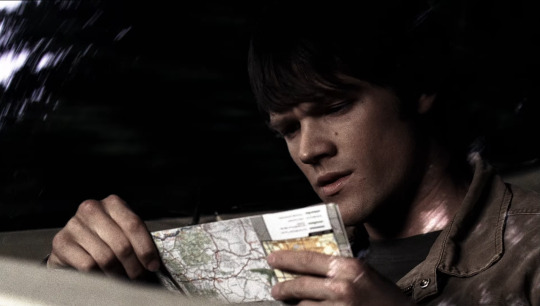
I'm so obsessed with this. it's so beautiful. the lighting. the palette. the trees over the windshield going by. green transience.
#1x02#s1#caps#sam winchester#sammy#spn#supernatural#incoherents#trying to calm down by actually watching spn. it's not really working but okay.#i always forget how early seasons IS A WORK OF ART#like not to be like the cinematography but the cinematography#it reminds me of summer times in the pnw.... like when i first watched spn....... but like.... the good parts.....
21 notes
·
View notes
Text
just endlessly thinking about blue eye samurai.
thinking about how akemi, taigen, and mizu are if a coin had three sides or maybe just the two and mizu is the bridge of metal between them.
akemi being the ideal image for women, for the life they endure. she was simultaneously a princess, a prostitute, and a prisoner. her entire life was men making decisions for her, even the ones that had good intentions, and she believed her deepest desire was freedom. it still is, but she has been revealed to this heinous predicament of her gender, and she’s realized that to reach true freedom as a woman is to be the bird in the cage, to play nice and to earn the love of a man until he buys her a bigger cage and a bigger cage until he trusts her not to fly away. and it'll never be true freedom, but it will come with power. it'll come with the freedom of only one master rather than many.
taigen being the ideal image of a man. not all powerful, but not weak. he had a taste of what it'd be to succeed, and when it was taken from him, that easy success, he mistook it for his honor. he hunted mizu down to kill him, and instead he saved him. he saved him and saved him and he came closer to killing mizu when they were on the cliff's edge, and just when he gets to the point where he may actually fight mizu, he's tortured for information on him. he is tortured. Literally tortured within an inch of his life, enduring such a heinous violence, and he refuses to break. this man was a fight, was the torturer, and the victim of his torturing could've been his salvation from pain but he refused. mizu gave back taigen's honor but not by fighting him.
akemi wanted freedom and learned she would need power to have it.
taigen wanted power and learned that the violence that came with it was infinite and dishonorable.
and then there's mizu. mizu who wants revenge, wants acceptance. arguably the same things as them both. mizu wants acceptance, the freedom of living and the freedom to love and be loved. mizu wants revenge, which follows after violence and power, to get said acceptance. she thinks she must do both, have both, to live peacefully, and she's blatant about how she will not live without either.
she's given acceptance with the blacksmith, her "mother," her husband, but she sees the flecks of avoidance in it.
the blacksmith will not hear of her true gender. her "mother" will not acknowledge the crime of her birth. her husband can't find tolerance for the violence within her, the man of her.
and so she has to balance the woman and man of her, the ronin and the bride. taigen and akemi. and it's meeting mizu that they start to unravel their own identities.
mizu, who is both, and akemi and taigen who thought themselves one but turned out to be neither.
god.
#complexities#and comparisons#i think they are so much more than what i’ve said but just#the cinematography#and the metaphors#the underlying theme of birds#blue eye samurai#the poetry that you are#it feels like every scene was specifically crafted#like they did not make one undeliberate mark#like it all has meaning#i’m insane#mizu#taigen#akemi#mizu x akemi x taigen#the ronin and the bride
2K notes
·
View notes
Text


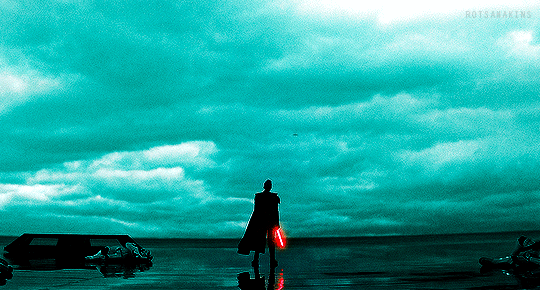




OBI-WAN KENOBI (2022)
Cinematography by Chung-Hoon Chung
@pscentral event 26: minimalism
#swedit#starwarsedit#star wars#kenobiedit#kenobi#kenobi series#kenobi show#obi wan kenobi#darth vader#userlumi#starwarsblr#*mine#*2024#*gifs#[cinematography]#pscentral events#1k#it's been a Hot Minute since I've giffed sw omg I've missed it I've wanted to do a set like this since like 2022 haha#when I think of minimalism this is the sort of shot I think of these are some of my favourite shots#cannot be normal giffing this show there's always a emotional devastation breakdown 😮💨#also peep the new watermark I should have changed it ages ago lol there's still a pre-made set with the old one tho rip
1K notes
·
View notes
Text

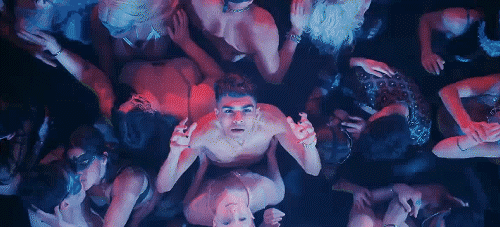

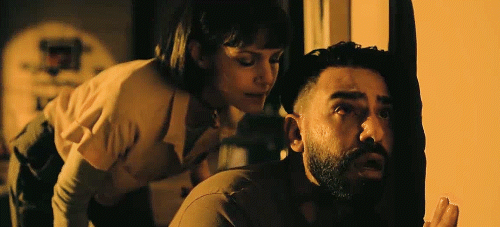
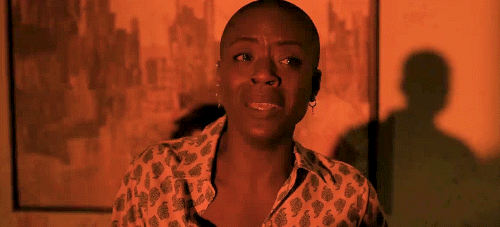
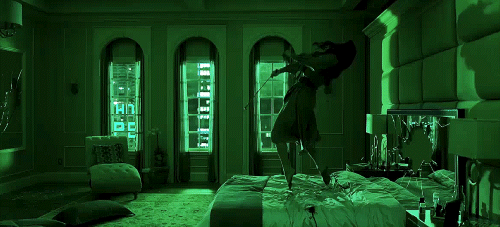
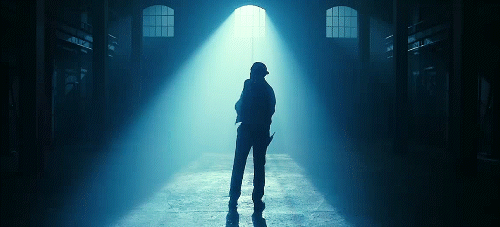

The Fall of the House of Usher | Miniseries (2023), Mike Flanagan
#the fall of the house of usher#tfothou#tfothouedit#tw flashing#i am very sad and a little upset because#some mike flanagan shows have an atmosphere and a tone and a general vibe that i find very compelling#that makes for an intense and pleasurable viewing experience even when the story or the pacing are uneven#and ep2 felt so much like that and i was so in - but then it wasn't there anymore and i kept waiting for it to come back#the cast was great and the cinematography mostly on point but... overall very meh#tv shows i watched in 2023#i made this#i just want a tag for the things i personally put out into the world
3K notes
·
View notes
Text
why should you go watch monkey man? well dev patel gets beat up continually for a solid hour before being brought back from the brink of death by a group of trans and non binary people who then help him kill and maim a bunch of politicians and cops. also there's one scene where he stabs a guy in the neck with a knife and then uses his teeth to slit his throat
#he's also covered in blood and sweaty for like 97% of the movie#also the cinematography and fight scenes and soundtrack are BANGIN#monkey man#dev patel
717 notes
·
View notes
Text

The apocalypse of Eden
I can’t wait for The two embers to reveal some lore, it’s so interesting what really happened to this world. But until then I’m free to make up any possible lore theories lolol
I wanted to work on backgrounds lately since I still struggle with them and Eden seemed as such an interesting practice. Also Sky is just beautiful😭
#artists on tumblr#sky cotl#sky children of the light#fanart#sky Eden#the first time I was playing it went like???#but then I understood#lol#украрт#cinematography#it’s more sketchy#and it took 3 hours#<3
430 notes
·
View notes
Text
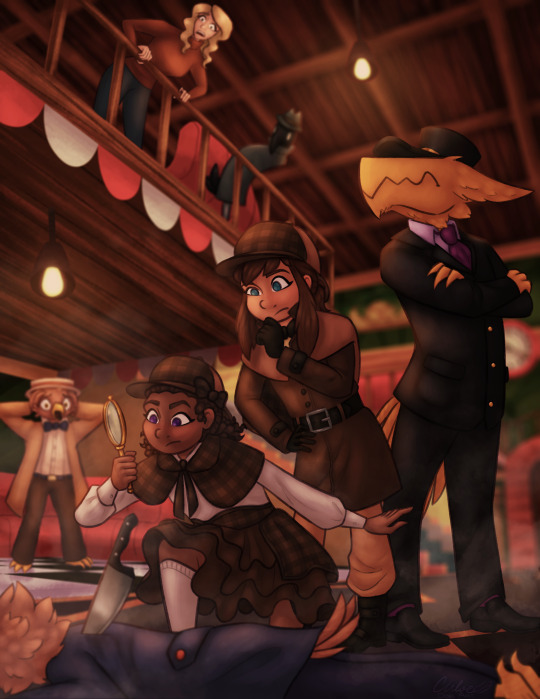
I had the pleasure to draw some art for the @anachronism-ahitzine! It was so much fun to participate in my first zine. You can read it here!
I chose to create a poster concept for Murder on the Owl Express 2, featuring Bow Kid! I also hid a little Chloe in there as a nod toward the Chloe DLC.
Full background below the cut (because I spent too much time on it for it to be covered up by the characters)
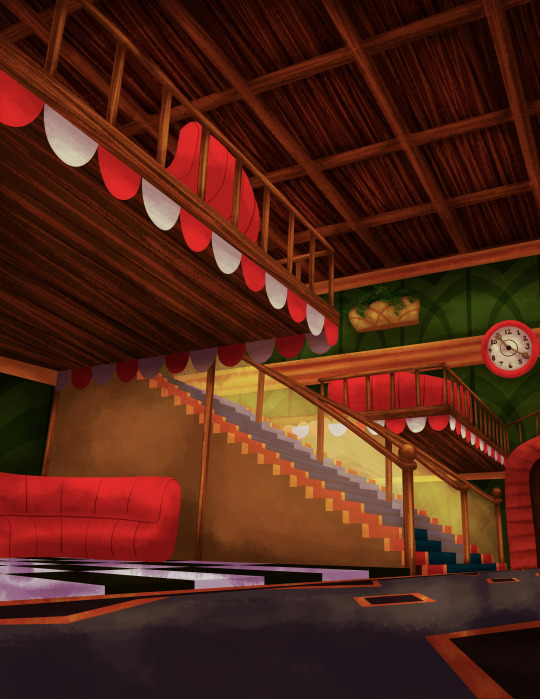
#a hat in time#ahit#conductor#the conductor#ahit conductor#ahit hat kid#hat kid#bow kid#ahit bow kid#murder on the owl express#it was so difficult to do this in a portrait format#my cinematography brain apparently ONLY knows how to do composition in widescreen formats#also the stairs killed me#I am never drawing stairs like that ever again
233 notes
·
View notes
Text


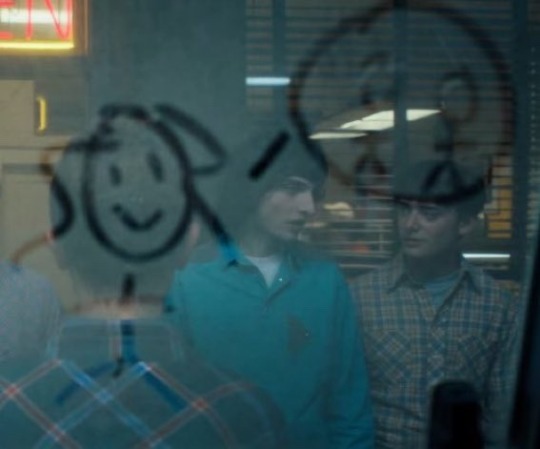
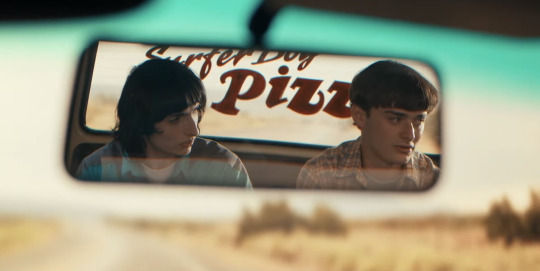



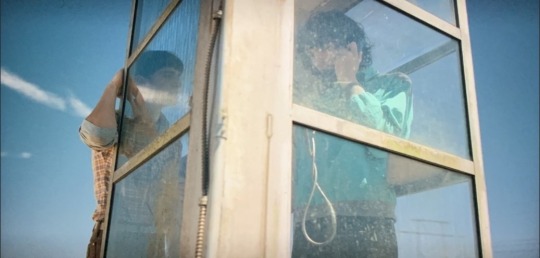
doing wayyy too much for it to be unrequited
#like what the fuck was the cabin scene. what the shit was that.#why would they film every scene they have together so beautifully. whats going on.#surely the editors were like ‘hey mattross… this shot of will and mike looks uh… really queer’#surely SOMEONE realised they were filming a gay romcom at some point?#like if they’re not meant to be in love w each other then i will question everything about their film choices.#like this is not how u do an unrequited romance. at least one that u dont want the audience to root for.#like even if this ends up being painfully unrequited i will rest easy knowing they share the prettiest scenes together#sorry for going insane over byler cinematography on a random wednesday afternoon#mine
4K notes
·
View notes
Text


LOLA TUNG as BELLY CONKLIN
THE SUMMER I TURNED PRETTY (2023)
#tsitpedit#the summer i turned pretty#tsitp#belly conklin#lola tung#gifs#byzil#usermandie#tuserbea#userlolo#useryusi#like okay cinematography!
579 notes
·
View notes
Text
Finally watched Blue Eye Samurai and damn, this show really is everything everyone's been saying. But also man, it's really making me think how much I wish non-animated shows focused on visuals. With everything being nearly-fully CGI, why do movies and shows have to look so... boring? If a friend group with a 90s camcorder can do it, why can't Disney (check out GGLS btw)? Idk, just frustrates me. Anyway, here's this show being eye candy.
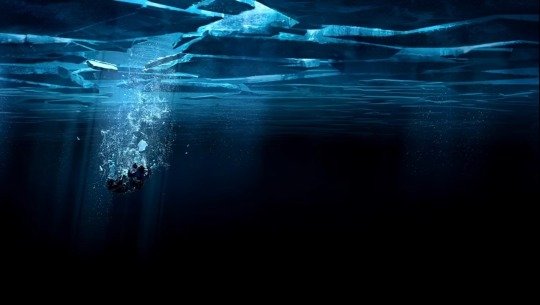




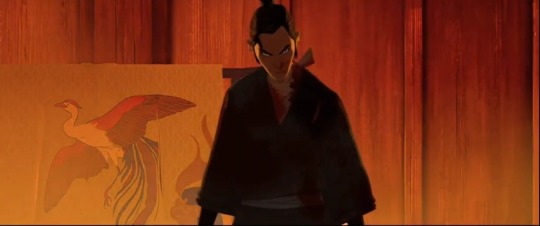
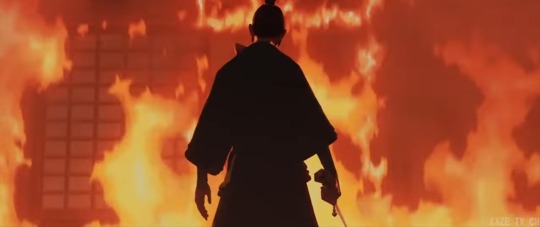
#GGLS is Green Goblin's Last Stand#legit for a film made by friends with pocket change it has some seriously impressive cinematography sometimes#blue eye samurai#mizu blue eye samurai#also MAN i love how they handle disabilities in the show#i cant speak for the amputee rep but as someone with speech impediments (stammer and a lisp) i adore the way they approached it#like “mind works so fast mouth can't keep up” is literally something i use to explain my stammer#and then portraying it not only as something undeserving of hate but also as beautiful and worth love/sexual desire?#man that shit put a giddy lil smile on my face#netflix#animation#mizu#takayoshi blue eye samurai
336 notes
·
View notes